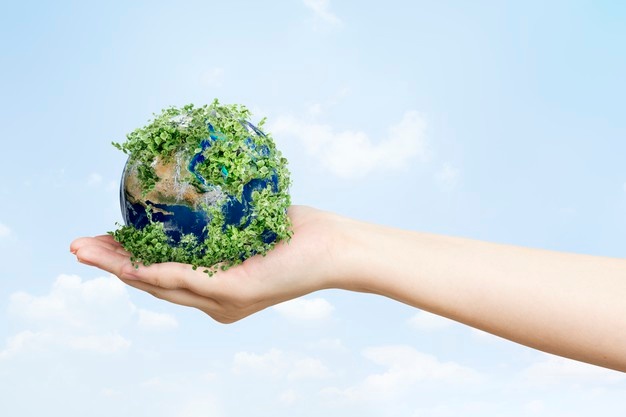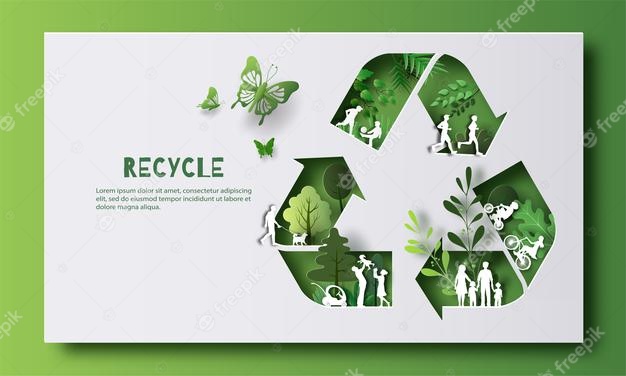What is Sustainable Development?
January 18, 2022
“Sustainable development is defined as development that satisfies the requirements of the present without jeopardising future generations’ ability to satisfy their own needs.”
This indicates that we must take care of our world, our resources, and our people in order to live in a sustainable manner. Furthermore, we may pass on our world to our children and grandkids in order for them to live in real sustainability.

What exactly is sustainability?
It is commonly acknowledged that in order to attain sustainability, economic, environmental, and social issues must be balanced in equal measure. So, in order to attain real sustainability, we must equally balance economic, social, and environmental sustainability considerations. These are as follows:
Environmental Sustainability: Living within the means of our natural resources is what environmental sustainability entails. To live in real environmental sustainability, we must guarantee that our natural resources, such as materials, energy fuels, land, water, and so on, are consumed at a sustainable pace. Some resources are more abundant than others; therefore we must examine material scarcity, environmental impact from extraction, and whether the resource can be retained within Circular Economy principles. We must aim for net zero carbon emissions and then go beyond to attain climate-positive principles. Environmental sustainability should not be compromised. Environmental sustainability should not be mistaken with complete sustainability, which must also account for economic and social considerations.
Economic sustainability: It demands a firm or country to use its resources efficiently and responsibly in order to function in a sustainable way and constantly make an operating profit. A company’s operations cannot be sustained unless it generates an operating profit. A firm will not be able to maintain its operations in the long run unless it acts properly and uses its resources efficiently.
Social Sustainability: The ability of a society, or any social structure, to consistently attain a high level of social well-being is referred to as social sustainability. Achieving social sustainability assures that a country’s, organization’s, or community’s social well-being can be sustained throughout time.
Click here: https://wegoshopping.in/wild-we/
HOW CAN SUSTAINABLE DEVELOPMENT BE ACHIEVED?
Many of humanity’s problems, such as climate change, water shortages, inequality, and hunger, can only be tackled on a global scale and by encouraging sustainable development, which is defined as a dedication to social advancement, environmental balance, and economic prosperity.
The United Nations approved the 2030 Agenda as part of a new sustainable development blueprint, which includes the Sustainable Development Goals (SDGs), a call to action to safeguard the planet and ensure people’s worldwide well-being. Individuals, corporations, governments, and nations all across the world must work together to achieve these following common goals:
- No Poverty
Poverty eradication in all its manifestations remains one of humanity’s most difficult concerns. Despite the fact that the number of people living in severe poverty fell by more than half between 1990 and 2015, far too many individuals continue to struggle for the most basic human necessities.
As of 2015, around 736 million people were still living on less than $1.90 per day, with many without food, decent drinking water, and sanitation. Rapid development in China and India has lifted millions out of poverty, but progress has been unequal. Women are more likely than males to be impoverished since they have less paid job, education, and property ownership.
2. Zero Hunger
Due to strong economic expansion and greater agricultural output, the number of undernourished individuals has decreased by about half in the last two decades. Many developing countries that were formerly plagued by famine and hunger can today fulfil their nutritional requirements. Central and East Asia, Latin America, and the Caribbean have all made significant strides in eliminating acute hunger.
3. Good Health and well-being
The 2030 Agenda recognises the importance of good health in achieving sustainable development, and it reflects the complexity and interconnection of the two. It considers growing economic and social inequality, increased urbanisation, climatic and environmental risks, the ongoing burden of HIV and other infectious illnesses, and new issues such as noncommunicable diseases. SDG 3 will need universal health coverage to be met in order to eliminate poverty and reduce inequities. Emerging global health issues that are not expressly addressed in the SDGs, such as antibiotic resistance, also need attention.
4. Quality Education
Since 2000, considerable progress has been made toward the goal of universal primary education. In 2015, the entire enrolment rate in emerging regions reached 91 percent, and the global number of children out of school has decreased by nearly half. Literacy rates have also increased dramatically, and more females are in school than ever before.
5. Gender Equality
Ending all forms of discrimination against women and girls is not only a basic human right, but it is also critical for a sustainable future; it has been demonstrated that empowering women and girls promotes economic growth and development.
6. Clean Water and Sanitisation
Water shortage affects more than 40% of the population, a worrisome proportion that is expected to worsen as temperatures rise. Despite the fact that 2.1 billion people have improved their water cleanliness since 1990, every continent is experiencing declining drinking water resources. Water stress is becoming increasingly prevalent in more nations, and rising drought and desertification are exacerbating the problem. It is predicted that by 2050, at least one in every four individuals would face periodic water shortages.
7. Affordable Electricity
Between 2000 and 2018, the number of people who had access to electricity climbed from 78 to 90 percent, while the number of people who did not had access to electricity decreased to 789 million. However, as the population grows, so will the desire for inexpensive energy, and an economy based on fossil fuels is causing significant changes in our environment.
8. Increase in Employment Rate
Despite the long-term effects of the 2008 economic crisis and global recession, the number of employees living in severe poverty has decreased considerably over the last 25 years. In emerging nations, the middle class currently accounts for more than 34% of total employment, a figure that nearly quadrupled between 1991 and 2015.
9. More Investments in Research and Innovation
Technological advancement is also critical to finding long-term solutions to economic and environmental concerns, such as creating new employment and increasing energy efficiency. Promoting sustainable industries, as well as investing in scientific research and innovation, are all key methods to promote long-term growth.
10. Reduced Income Inequality
Income inequality is increasing—the richest 10% get up to 40% of global income, while the lowest 10% earn only 2% to 7%. When we include population growth inequality in emerging nations, inequality has grown by 11%.
11. Sustainable Cities
By 2050, two-thirds of the world’s population (6.5 billion people) will be urban. Sustainable development cannot be realised without fundamentally altering the way we design and manage urban places. The fast growth of cities as a result of rising populations and migration has resulted in a boom in megacities, particularly in the developing world, and slums are becoming a more prominent component of urban life.
12. Effective Management of Natural Resources
The effective management of our common natural resources, as well as the disposal of hazardous waste and pollutants, are critical goals for achieving this aim. Encourage industries, enterprises, and consumers to recycle and minimise waste, as well as assist developing nations in transitioning to more sustainable consumption habits by 2030.
13. Control of Climatic Disasters
Climate-related calamities cause yearly economic damages in the hundreds of billions of dollars. Not to mention the human toll of geophysical catastrophes, which are 91 percent climate-related and killed 1.3 million people and wounded 4.4 billion between 1998 and 2017. The goal is to raise $100 billion per year by 2020 to address poor nations’ requirements for climate adaptation and low-carbon development.
14. Protecting Marine Ecosystem
The SDGs seek to manage and safeguard marine and coastal ecosystems from pollution while also addressing the effects of ocean acidification. Improving protection and sustainable use of ocean-based resources through international legislation can also aid in mitigating some of the difficulties confronting our seas.
15. Forest Protection
Almost 7,000 animal and plant species have been unlawfully exported. Wildlife trafficking not only destroys biodiversity, but it also causes insecurity, fosters conflict, and feeds corruption. Action is being done to limit the loss of natural ecosystems and biodiversity that are part of our shared legacy, as well as to promote global food and water security, climate change mitigation and adaptation, and peace and security.
16. Shielding the Human Community with Strict Laws
The SDGs seek to dramatically reduce all types of violence, as well as to collaborate with governments and communities to eliminate conflict and instability. Promoting the rule of law and human rights is critical to this process, as is curbing the flow of illegal armaments and improving developing nations’ involvement in global governance organisations.
17. Promoting International Trade
These objectives seek to improve North-South and South-South collaboration by assisting national strategies in meeting all of the aims. Promoting international trade and assisting poor nations in increasing their exports are all components of building a global rules-based and equitable trading system that is fair and open to everybody.

Wild We: Followers of Sustainable Development
Wild We is India’s eco-friendly comfortable clothing brand. They empower people to actively stand for causes they collectively believe in, through powerful designs on sustainable clothing. Wild We use fashion as a medium to raise awareness and funds for causes like Research, climate change, animal rights, women empowerment, and more. Their collection is made from the finest all-natural fabrics; garments made with natural fibers do end up in a landfill.
Click here: https://wegoshopping.in/wild-we/